Interface Strength, Damage and Fracture between Ceramic Films and Metallic Substrates
Abstract
:1. Introduction
2. Interface Fracture Energy Between Alumina Films and Ni Substrates
3. Finite Element Model of Alumina Film on Ni Substrate with Interface Cohesive Zone
4. Simulation Results and Discussion
4.1. Stress and Interface Damage Evolution
4.2. Increased Interface Strength of Nanocrystalline Films and the Effects of Residual Stress on Interface Strength
4.3. Thickness Effect of Alumina Films on Interface Damage and Fracture
5. Conclusions
Author Contributions
Funding
Institutional Review Board Statement
Informed Consent Statement
Data Availability Statement
Conflicts of Interest
Abbreviations
| 3D | Three dimensional |
| ABQUAS | Name of the soft based on finite element method. |
| C3D8R | Name of the element in ABQUAS, C (entity element), 3D (three dimensional), 8 (number of nodes), R (reduced integral element). |
| COH3D8 | Name of the cohesive element in ABQUAS based on cohesive model, COH (cohesive). |
References
- Padture, N.P.; Gell, M.; Jordan, E.H. Thermal barrier coatings for gas-turbine engine applications. Science 2002, 296, 280–284. [Google Scholar] [CrossRef] [PubMed]
- Kom, D.; Elssner, G.; Cannon, R.M.; Rühle, M. Fracture properties of interracially doped Nb-Al2O3bicrystals: I. fracture characteristics. Acta Mater. 2002, 50, 3881–3901. [Google Scholar]
- Rivoaland, L.; Maurice, V.; Josso, P.; Bacos, M.P.; Marcus, P. The effect of sulfur segregation on the adherence of the thermally-grown oxide on NiAl-I: Sulfur segregation on the metallic surface of NiAl(001) single-crystals and at NiAl(001)/Al2O3 interfaces. Oxid. Met. 2003, 60, 137–157. [Google Scholar] [CrossRef]
- Ksiazek, M.; Mikulowski, B.; Richert, M. Effect of Nb+Ti coating on the wetting behavior, interfacial microstructure, and mechanical properties of Al/Al2O3 joints. J. Mater. Sci. 2010, 45, 2194–2200. [Google Scholar] [CrossRef]
- McKeown, J.T.; Sugar, J.D.; Gronsky, R.; Glaeser, A.M. Effects of impurities on alumina-niobium interfacial microstructures. Mater. Charact. 2006, 57, 50–57. [Google Scholar] [CrossRef] [Green Version]
- Zhang, X.C.; Liu, C.J.; Xuan, F.Z.; Wang, Z.D.; Tu, S.T. Effect of residual stresses on the strength and fracture energy of the brittle film: Multiple cracking analysis. Comp. Mater. Sci. 2010, 50, 246–252. [Google Scholar] [CrossRef]
- Hughey, M.P.; Cook, R.F.; Thurn, J. Stress stability and thermo-mechanical properties of reactively sputtered alumina films. J. Mater. Sci. 2005, 40, 6345–6355. [Google Scholar] [CrossRef]
- Uday, M.B.; Ahmad-Fauzi, M.N.; Noor, A.M.; Rajoo, S. Current Issues and Problems in the Joining of Ceramic to Metal. In Joining Technologies; Ishak, M., Ed.; IntechOpen: London, UK, 2016. [Google Scholar]
- Bai, M.; Sarakinou, E.; Chen, Y.; Chandio, A.D.; Zhao, X.F.; Preuss, M.; Xiao, P. Microtexture analysis of the alumina scale in thermal barrier coatings. J. Am. Ceram. Soc. 2015, 98, 3639–3642. [Google Scholar] [CrossRef]
- Carisey, T.; Leviri, I.; Brandon, D.G. Micro structure and mechanical properties of textured Al2O3. J. Eur. Ceram. Soc. 1995, 15, 283–289. [Google Scholar] [CrossRef]
- Zhang, X.C.; Xu, B.S.; Xuan, F.Z.; Tu, S.T. Analysis on multiple cracking in film/substrate systems with residual stresses. J. Appl. Phys. 2008, 103, 023519. [Google Scholar] [CrossRef]
- Ran, X.Z.; Liu, D.; Li, J.; Wang, H.M.; Cheng, X.; Zhang, J.K.; Tang, H.B.; Liu, X. Effects of microstructures on the fatigue crack growth behavior of laser additive manufactured ultrahigh-strength AerMet100 steel. Mater. Sci. Eng. A 2018, 721, 251–262. [Google Scholar] [CrossRef]
- Amiri, A.; Belhouari, M.; Bounoua, N.; Achour, T.; Bouiadjra, B. Three-dimensional finite element analysis of thin films cracking along ceramic substrates. Mech. Res. Commun. 2013, 47, 1–5. [Google Scholar]
- Li, X.N.; Liang, L.H.; Xie, J.J.; Chen, L.; Wei, Y.G. Thickness-dependent fracture characteristics of ceramic coatings bonded on the alloy substrates. Surf. Coat. Technol. 2014, 258, 1039–1047. [Google Scholar] [CrossRef]
- Qian, L.; Zhu, S.; Kagawa, Y.; Kubo, T. Tensile damage evolution behavior in plasma-sprayed thermal barrier coating system. Surf. Coat. Technol. 2003, 173, 178–184. [Google Scholar] [CrossRef]
- Renusch, D.; Schütze, M. Measuring and modelling the TBC damage kinetics by using acoustic emission analysis. Surf. Coat. Technol. 2007, 202, 740–744. [Google Scholar] [CrossRef]
- Liang, L.H.; Li, X.N.; Liu, H.Y.; Wang, Y.B.; Wei, Y.G. Power-law characteristics of damage and failure of ceramic coating systems under three-point bending. Surf. Coat. Technol. 2016, 285, 113–119. [Google Scholar] [CrossRef] [Green Version]
- Liu, H.Y.; Wei, Y.G.; Liang, L.H.; Liu, X.H.; Wang, Y.B.; Ma, H.S. Damage characterization model of ceramic coating systems based on energy analysis and bending tests. Ceram. Int. 2018, 44, 4807–4813. [Google Scholar] [CrossRef]
- Huang, J.; Kim, B.C.; Takayama, S.; Thouless, M.D. The control of crack arrays in thin films. J. Mater. Sci. 2014, 49, 255–268. [Google Scholar] [CrossRef]
- Vitos, L.; Ruban, A.V.; Skriver, H.L.; Kollár, J. The surface energy of metals. Surf. Sci. 1998, 411, 186–202. [Google Scholar] [CrossRef]
- Jiang, Q.; Lu, H.M.; Zhao, M. Modelling of surface energies of elemental crystals. J. Phys. Condens. Matt. 2004, 16, 521–530. [Google Scholar] [CrossRef]
- Tan, X.Y.; Wang, X.; Yin, Y.S.; Liu, Y.C.; Zhang, J.S.; Meng, F.Q. Crystal structures and valence electron structure of α-Al2O3. Chin. J. Nonferrous Met. 2002, 12, 18–23. [Google Scholar]
- Zhang, P.H.; Chang, R.Z.; Wei, Z.; Cao, H.; Zhou, X.N. Experimental measurement of enthalpy, melting point, and melting heat for α-alumina in the range from 550 to 2400K. Acta Metrol. Sin. 1986, 7, 110–116. [Google Scholar]
- Liang, L.H.; Wei, H.; Li, X.N.; Wei, Y.G. Size-dependent interface adhesive energy and enhanced interface strength of nanostructured systems. Surf. Coat. Technol. 2013, 236, 525–530. [Google Scholar] [CrossRef] [Green Version]
- Speight, J.G. Lange’s Handbook of Chemistry, 16th ed.; CD & W Inc.: Laramie, WY, USA; McGraw-Hill: New York, NY, USA, 2005; p. 385. [Google Scholar]
- Jiang, Q.; Lu, H.M. Size-dependent interface energy and its applications. Surf. Sci. Rep. 2008, 63, 427–464. [Google Scholar] [CrossRef]
- Cahn, R.W.; Haasen, P. Physical Metallurgy, 3rd ed.; North-Holland Pub. Co.: Amsterdam, The Netherlands, 1983; p. 64. [Google Scholar]
- Sargent-Welch Scientific Company. Table of Periodic properties of the Elements; Sargent-Welch Scientific Company: Skokie, IL, USA, 1980. [Google Scholar]
- Needleman, A.A. A continuum model for void nucleation by inclusion debonding. J. Appl. Mech. Trans. ASME 1987, 54, 525–531. [Google Scholar] [CrossRef]
- Long, H.; Liang, L.H.; Wei, Y.G. Failure characterization of solid structures based on an equivalence of cohesive zone model. Int. J. Solids Struct. 2019, 163, 194–210. [Google Scholar] [CrossRef] [Green Version]
- Cui, W.C.; Wisnom, M.R.; Jones, M. A comparison of failure criteria to predict delamination of unidirectional glass epoxy specimens waisted through the thickness. Composites 1992, 23, 158–166. [Google Scholar] [CrossRef]
- Khan, A.; Dong, Z.; Peng, X. Accelerated phase transformation of thermally grown alumina on Ni2Al3: Effect of dispersion of hcp-oxides with various content and particle size and chemistry. Surf. Coat. Technol. 2020, 394, 125861. [Google Scholar] [CrossRef]
- You, X.M.; Liang, L.H.; Wei, Y.G. The atomistic simulation study of Ag/MgO interface tension fracture. Comp. Mater. Sci. 2018, 142, 277–284. [Google Scholar] [CrossRef] [Green Version]
- Uday, M.B.; Ahmad-Fauzi, M.N.; Alias, M.N.; Rajoo, S. An insight into microstructure evolution during plastic information in AA6061 alloy after friction welding with alumina-YSZ composite. Mech. Mater. 2015, 91, 50–63. [Google Scholar] [CrossRef]

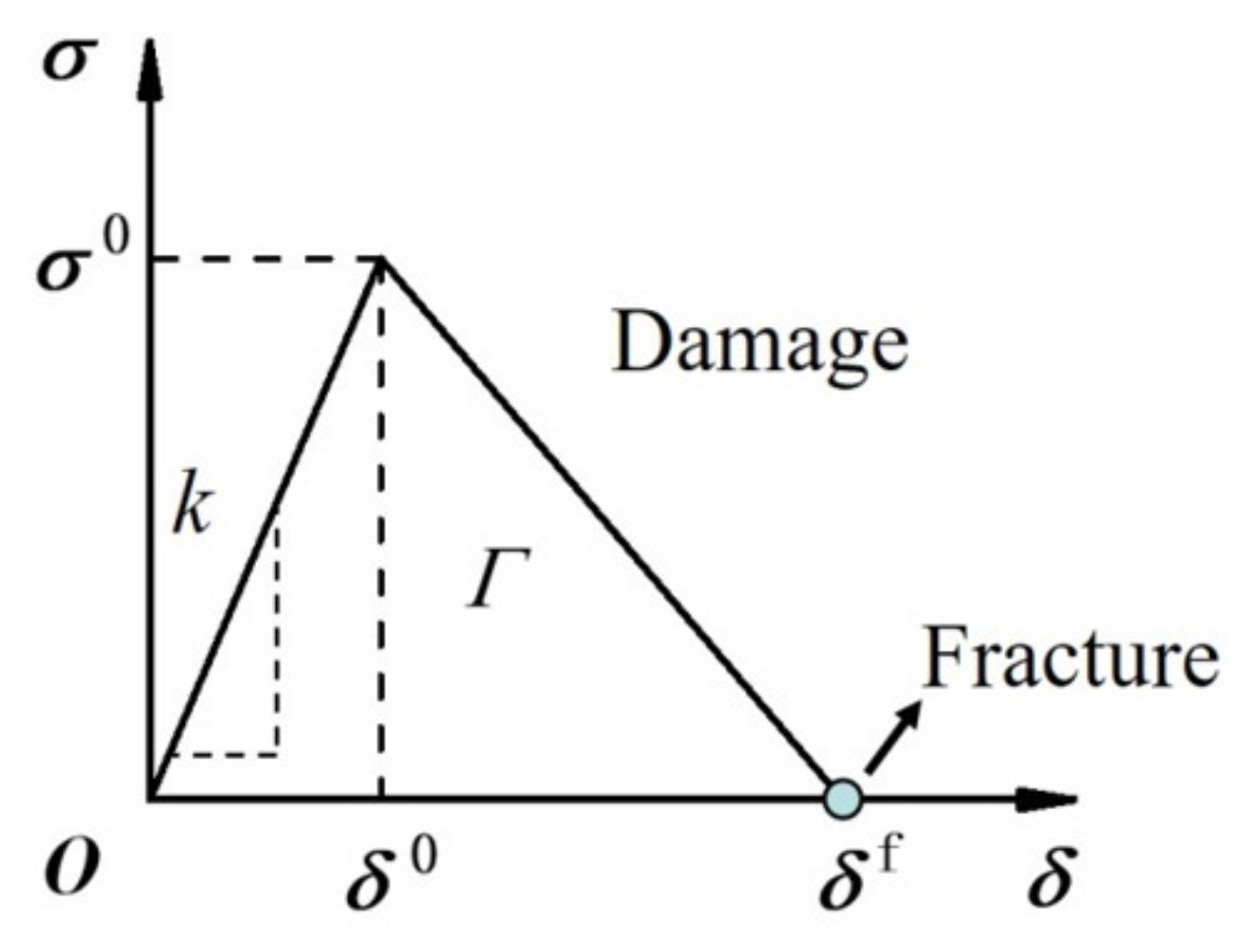



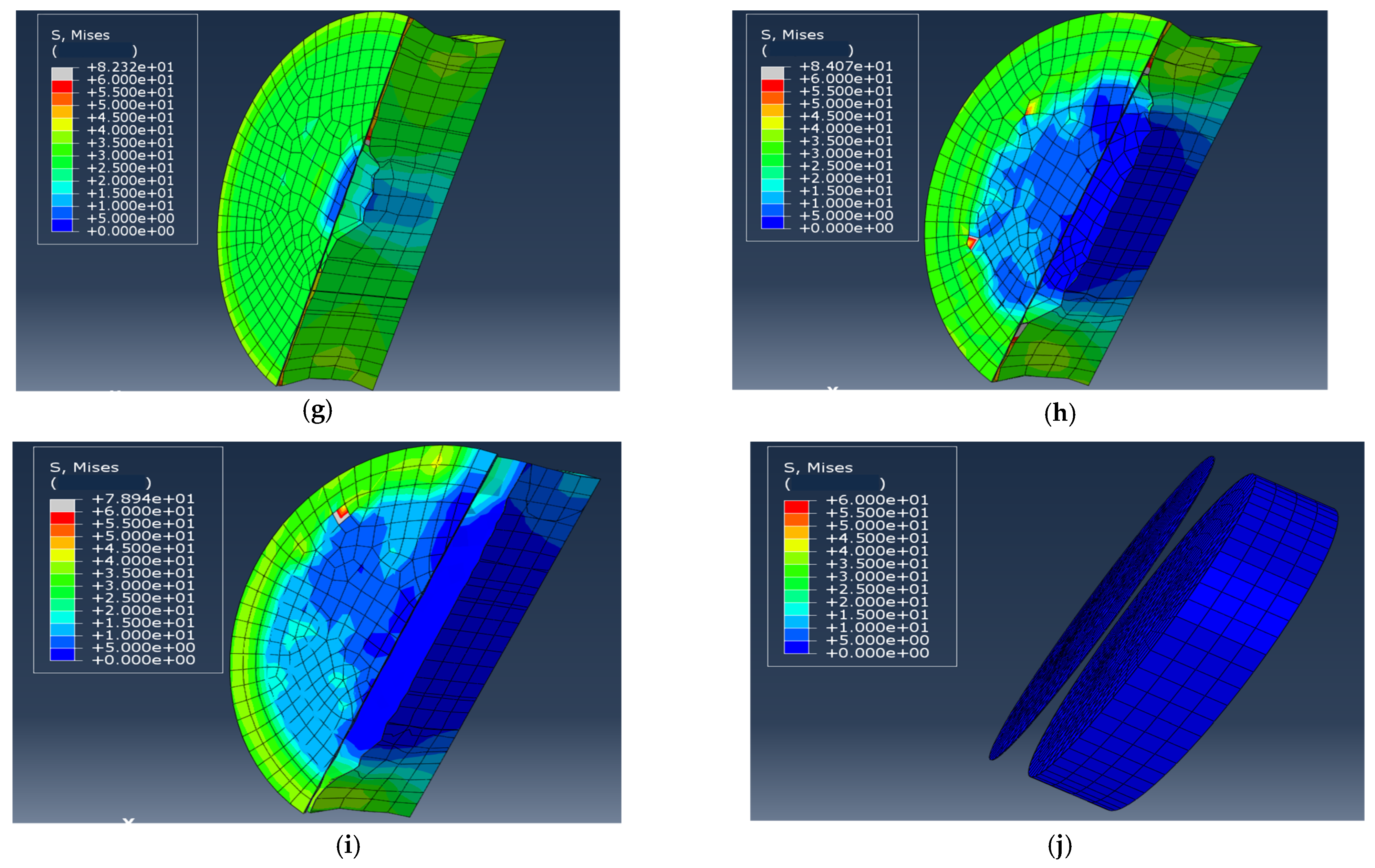

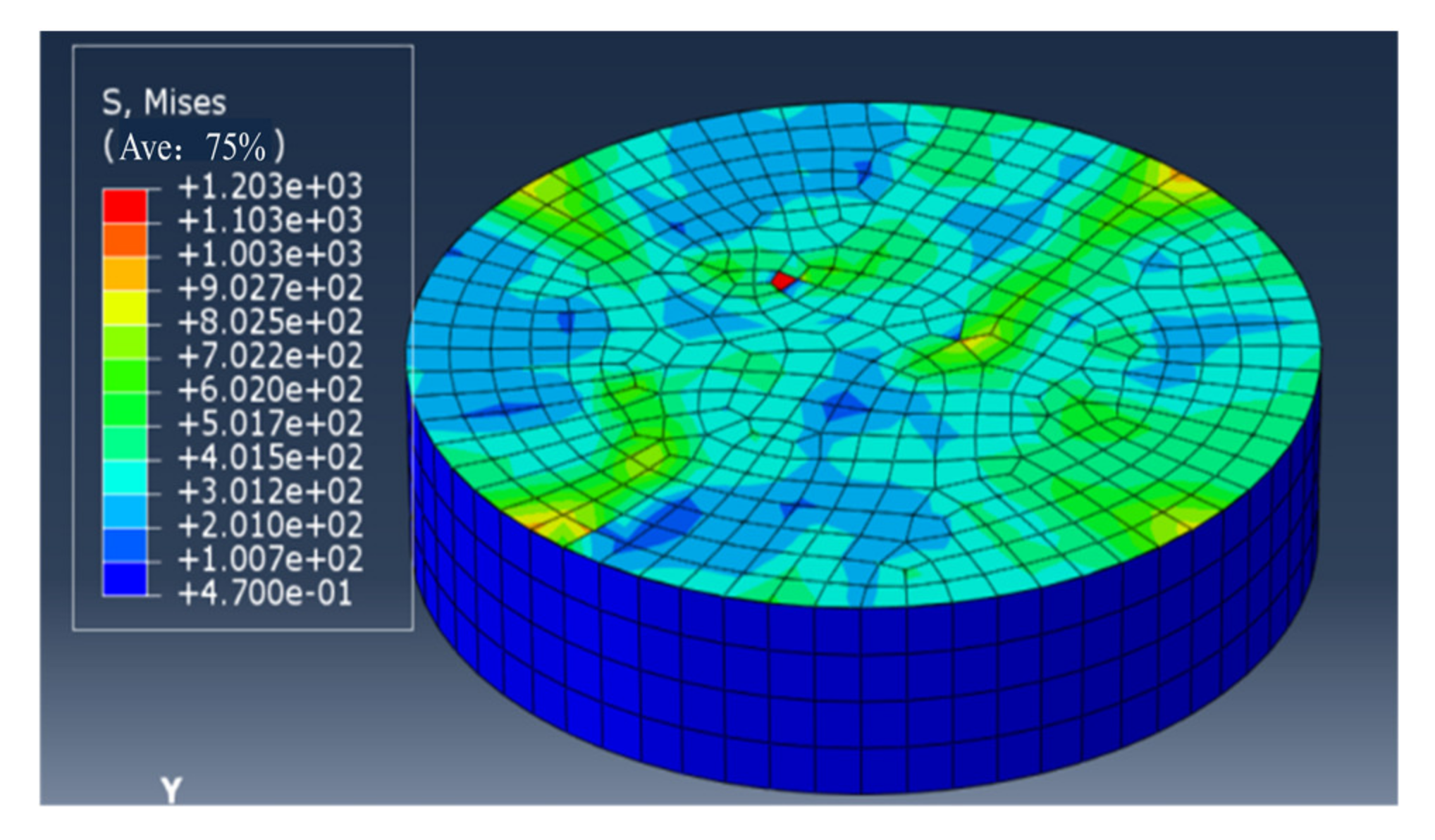

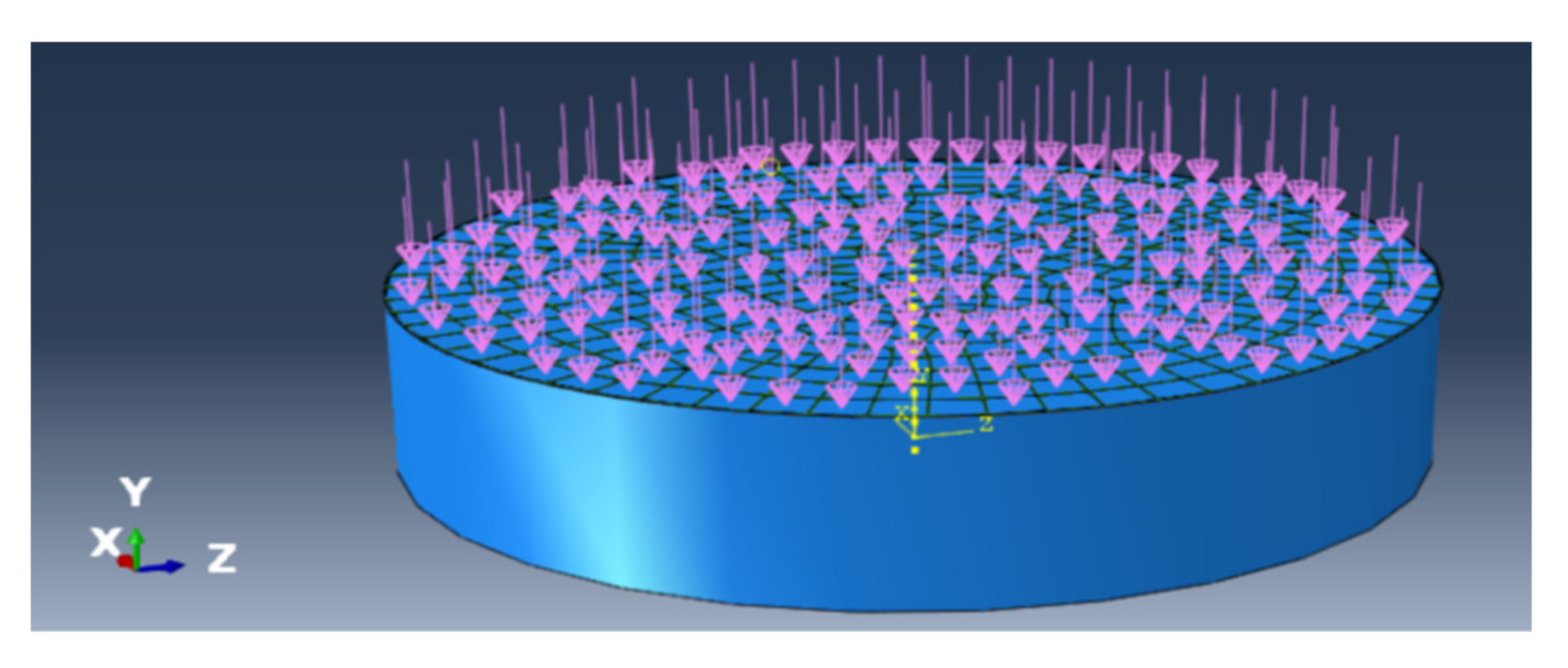
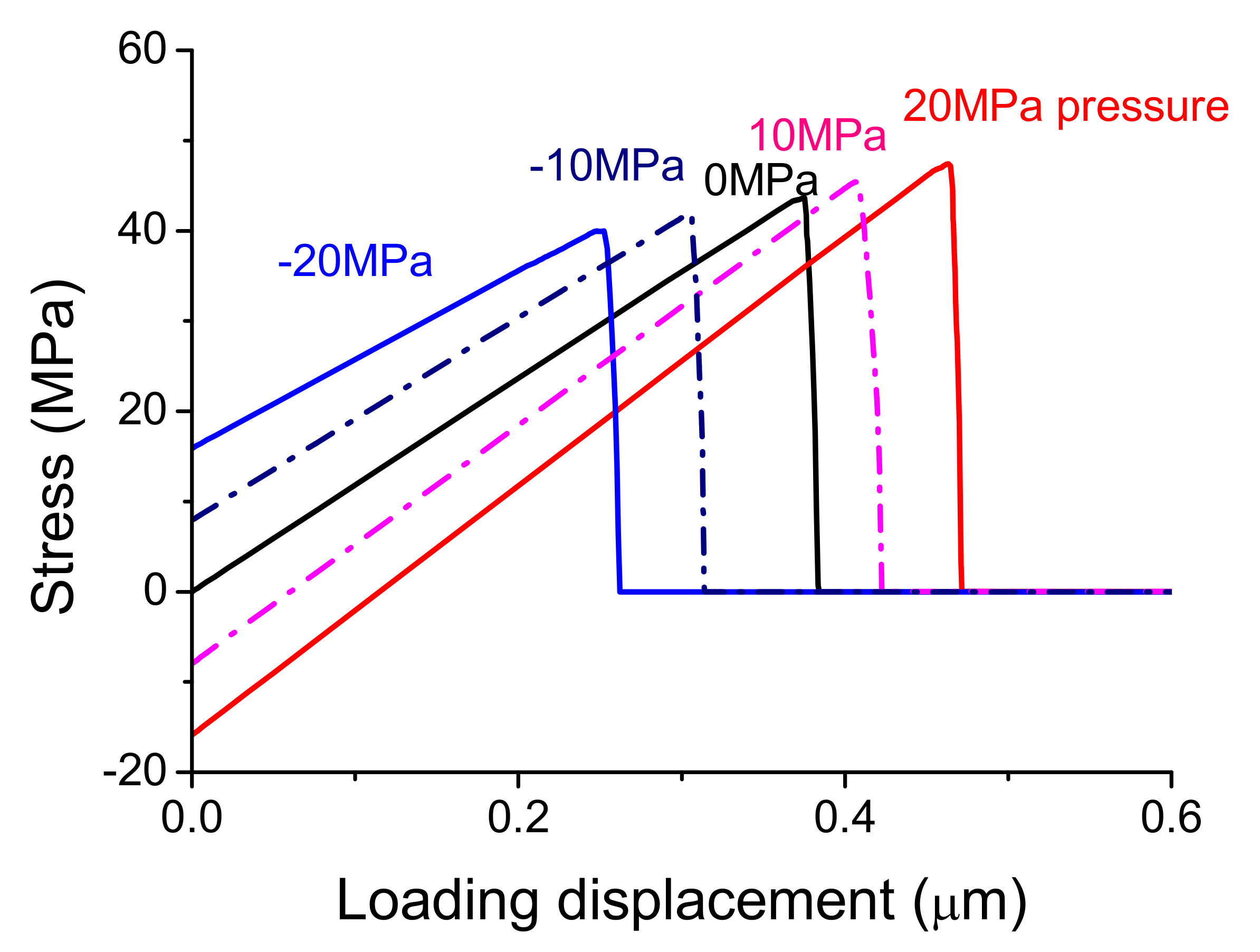

Publisher’s Note: MDPI stays neutral with regard to jurisdictional claims in published maps and institutional affiliations. |
© 2021 by the authors. Licensee MDPI, Basel, Switzerland. This article is an open access article distributed under the terms and conditions of the Creative Commons Attribution (CC BY) license (http://creativecommons.org/licenses/by/4.0/).
Share and Cite
Liang, L.; Chen, L.; Wu, L.; Tan, H. Interface Strength, Damage and Fracture between Ceramic Films and Metallic Substrates. Materials 2021, 14, 353. https://doi.org/10.3390/ma14020353
Liang L, Chen L, Wu L, Tan H. Interface Strength, Damage and Fracture between Ceramic Films and Metallic Substrates. Materials. 2021; 14(2):353. https://doi.org/10.3390/ma14020353
Chicago/Turabian StyleLiang, Lihong, Linfeng Chen, Luobing Wu, and Huifeng Tan. 2021. "Interface Strength, Damage and Fracture between Ceramic Films and Metallic Substrates" Materials 14, no. 2: 353. https://doi.org/10.3390/ma14020353




